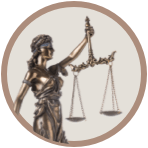Navigating the often subtle and insidious landscape of coercive control is not only challenging but can be vital for the well-being of individuals and families. It is important to be able to spot the signs of coercive control as early as possible.
This form of abuse, often hidden beneath the surface, can have profound and lasting effects on those subjected to it. As leading family law experts, we want to shed light on this all-too-pervasive issue.
In this article, we delve into what can constitute coercive control, the signs to look out for, and the legal avenues available in Australia to safeguard yourself and your loved ones. By raising awareness and understanding, we hope to empower individuals, equip them with knowledge, and ultimately, contribute to breaking the cycle of this silent form of domestic violence.
What is Coercive Control?
Coercive control can represent a complex and often less visible form of domestic violence that is not always immediately recognisable. Unlike physical violence and abuse, this type of abuse can be characterised by a pattern of behaviours designed to establish and maintain an imbalance of power within a relationship. The tactics employed, which encompass manipulation and intimidation, serve to instil fear, isolate the victim, and foster dependence on the abuser.
Although physical scars may be absent, the psychological impact and effect on life outcomes of coercive control can be deeply traumatising and long-lasting. Increasing recognition of this insidious form of abuse has resulted in a growing chorus advocating for legal reforms. In response to this, the Queensland Government is reportedly gearing up to make coercive control a criminal offence by the end of 2023, reflecting an important step in the legal acknowledgement and response to this form of domestic violence.
13 Signs and Examples of Coercive Control
Here are a few of the key signs of coercive control. It’s important to note that not all of the following signs need to be present in order for abuse to qualify as coercive control; any single one of these signs qualifies as coercive control. And there may be other forms that are not included below. As such, this list is not exhaustive. If you notice any of the following signs in your relationship or the relationship of a family member or friend, seek help today.
-
Isolation from friends and family
The abuser may seek to cut off the victim from their social networks, often under the guise of love or concern. This isolation can lead to the victim feeling alone and dependent on their abuser for social interaction and support.
-
Control over daily life
This could involve strict rules about mundane aspects of daily life, such as what to wear, what to eat, or where to go. This kind of micromanagement can significantly restrict the victim’s personal freedom and decision-making power.
-
Surveillance and privacy invasion
The abuser may monitor the victim’s communications, snoop on their personal devices or track their physical movements, undermining their personal privacy and autonomy.
-
Deprivation of basic needs
This could involve withholding access to necessary resources like money, food, transportation, or medical care, increasing the victim’s reliance on the abuser, significantly impacting their independence and well-being.
-
Threats and intimidation
The abuser may use threats, whether direct or indirect, to induce fear and compliance. This could involve threats of physical harm, threats to harm loved ones, or threats of self-harm. These threats may range from subtle hints to overt statements of harm.
-
Gaslighting
This psychological manipulation tactic is used to make victims question their own reality or sanity. The abuser may deny events, twist the truth, or belittle the victim’s feelings and experiences, leading them to doubt their own perceptions and judgement.
-
Dehumanisation and degradation
The victim may be subjected to constant criticism, humiliation, or insults, eroding their self-esteem and sense of self-worth.
-
Restricting freedom of movement
This could involve the abuser refusing to let the victim leave the house, controlling where they can go, or even physically restraining them.
-
Control over finances
The abuser may control the victim’s access to financial resources, monitor their spending, or make all financial decisions, rendering the victim financially dependent.
-
Manipulation of information
The abuser might lie, withhold important information, or distort the truth to confuse and control the victim.
-
Enforcing trivial demands
The abuser may insist on the victim adhering to seemingly insignificant demands or routines, instilling a constant state of compliance and fear of consequences.
-
Punishments or consequences for ‘disobedience’
If the victim doesn’t comply with the abuser’s rules or demands, they may face punishments. These could range from emotional manipulation to physical harm, or threats towards someone or something close to the victim.
-
Control over personal appearance
The abuser might dictate how the victim should look, including their clothing, hairstyle, makeup, or weight.
Each of these signs individually can be harmful, but when combined in a pattern of coercive control, they can have a deeply damaging and lasting impact on the victim’s emotional, psychological, and physical wellbeing. It’s crucial to recognise these signs and take action, whether you’re a victim or a concerned friend or family member.
How to Deal with Coercive Control
If you find yourself subjected to a situation of coercive control, it’s crucial to remember that you’re not alone and there are resources available to support you. Here are a few ways that you can deal with it:
- Recognise the signs: The first step is to understand what coercive control is and acknowledge if you’re experiencing it. This will empower you to seek the help you need.
- Reach out: Try and talk with trusted friends and family members about your situation. If you have no one close to you that you can talk to then reach out to one or more of the following resources. You could talk to a trusted medical practitioner.
- Utilise available resources: There are numerous dedicated hotlines available to provide immediate assistance. Here are a few key contacts:
- Relationships Australia (Queensland branch): 1300 364 277
- 1800RESPECT: 1800 737 732
- DVConnect Womensline: 1800 811 811
- DVConnect Mensline: 1800 600 636
- Sexual Assault Helpline: 1800 010 120
- Kids Help Line: 1800 55 1800
- Lifeline: 13 11 14
- Prioritise safety: If you or your children are in immediate danger, call 000 immediately. Safety should always be the top priority.
- Seek legal advice: The intricacies of legal processes can be challenging to navigate. Professional legal advice can help you understand your rights and the options available to you. At Daykin Family Law, our expert team is ready to guide you through these challenging times. Contact us today to find out how we can help.
Remember, it’s important to take steps that are safe for your situation. Each circumstance is unique, and what works for one person might not work for another. You don’t have to face this alone, and help is available.

















